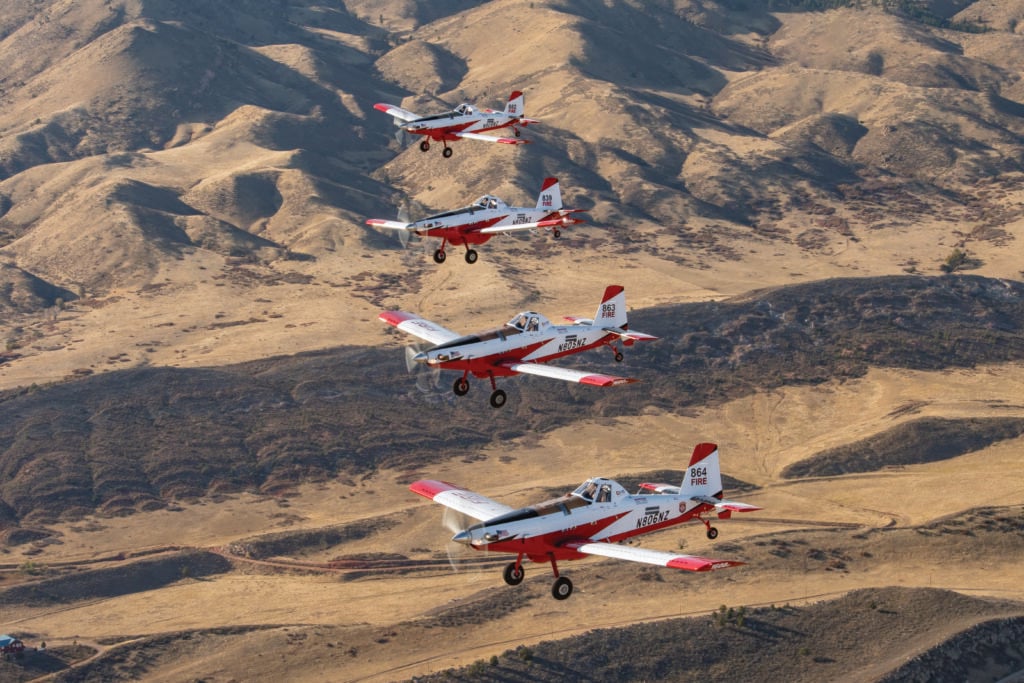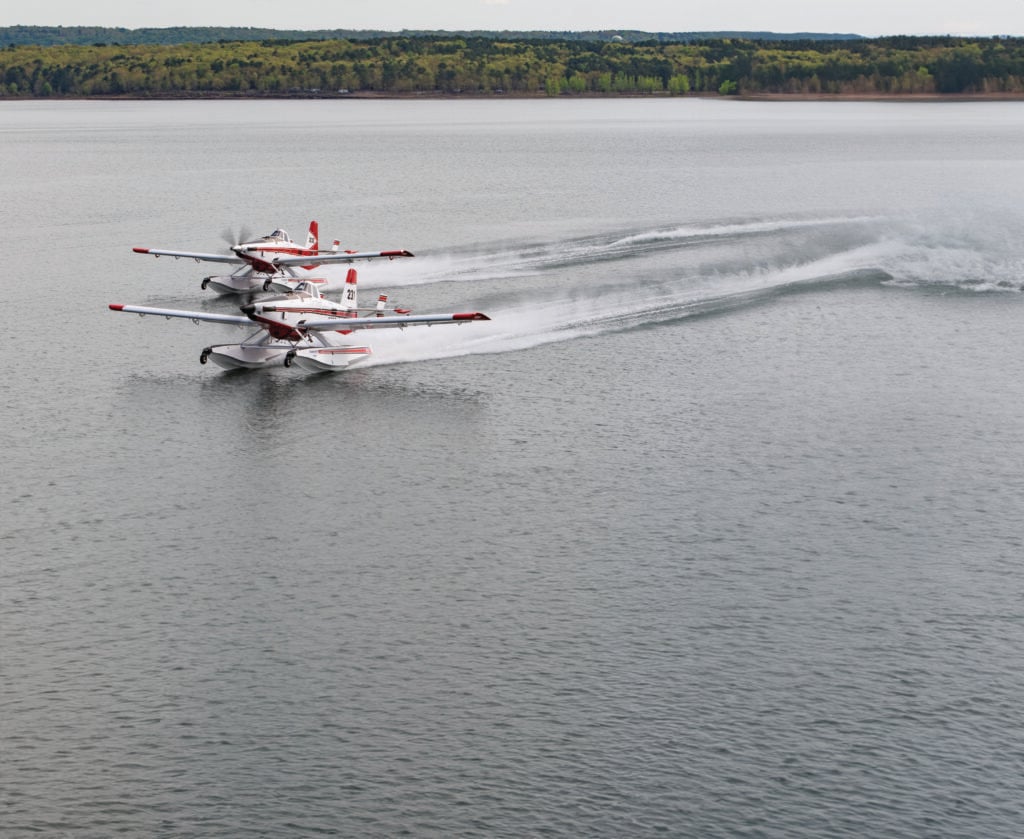By Nancy Argyle
During the spring and summer of 2023, a concerned world watched as Canada burned. Toxic smoke from 29 mega-fires, each exceeding 100,000 hectares in size, smothered cities across the country, reached across the border into the U.S., impacting millions of American lives, and, eventually, travelled as far as Norway.
By the time September came, more than 6,000 fires had devoured 16.5 million hectares of land – nearly twice the size of Portugal. Dismay, at records being broken and never-before statistics accumulating, was tempered as officials looked optimistically to the coming rainy season to help douse the fires.

But, despite cooler fall weather, the fires kept burning – helping to validate some experts who believe, that, there will be no more fire “seasons,” only fire years. By the middle of October, evacuation notices were still being issued due to fires encroaching on populated areas and it became clear that some fires would likely burn throughout the winter in a country known for its frigid temperatures, ice, and snow.
Locally, in small Canadian towns and large cities alike, some questioned the firefighting strategy used by wildfire agencies. Cities were choked with the worst air quality on the planet while other areas endured significant losses through property destruction and impacts to livelihoods. On social media, armchair critics were plentiful along with numerous messages of gratitude and support for firefighters.
Of course, the big question on everyone’s mind was whether this season was a one-off perfect firestorm of factors or whether 2023 was a harbinger of things to come.
As Canada experienced its warmest May to July period in more than 80 years, southern Quebec burst into flames, burning more land than in the previous 20 years combined. According to a World Weather Attribution study, wildfire-prone weather conditions in Quebec were 50 percent more intense this year over previous years. In other words, buckle up because the wild ride that 2023 fires produced could become the new norm.
Wildfires Cause Substantial Harm to People and Animals
As the second largest country in the world and home to 30% of the world’s forests, Canada has more than a few trees – trees that have been experiencing drought and higher than normal temperatures for some time now. Drought-stressed trees are far less resistant to fire and can contribute to more extreme fire behavior. Combined with non-typical weather patterns, the stage was set to make these severe wildfires more frequent.
As the 2023 fires unfolded, provincial wildfire agencies across Canada realized that they needed more resources and reached out to mutual aid partners and the international wildfire fighting community. Nearly a dozen countries responded sending firefighters from the United States, Mexico, Portugal, Australia, New Zealand, Chile, Costa Rica, Spain, South Africa, and Korea. This is a common strategy which, in some cases, sees Canada sending its firefighters to help other countries in need.
Despite the influx of help, many believed it was not enough. There were not enough aircraft, not enough pilots, and not enough boots on the ground. Wind and lightening storms created chaos at every turn and the season dragged on mercilessly with fire after fire. At times, firefighters made spectacular saves – successfully stopping the flames, at the last minute, as they approached a home’s patio furniture in one example. At other times, firefighters retreated to a safe location as homes were engulfed.
The losses mounted and the harm increased as communities expressed their lack of trust and a feeling of being let down. Told to evacuate, some felt compelled to stay since they knew there would be very little resources available to help save their homes. At times, interactions became tense between the RCMP (police), wildfire managers and the public. Insufficient resources were clearly impacting public safety in more ways than one.

The Role of Military Helicopters in Wildfires
In British Columbia (B.C.), a Canadian province that hugs the Pacific coastline and boasts jaw-dropping mountain ranges, crystal white sandy beaches and dense lush forests, the government wildfire service is both well-trained and very experienced in dealing with massive wildfires. Even so, that didn’t prevent an independent review from being ordered to assess the 2023 firefighting effort – a review that was first demanded by local officials from B.C. fire-ravaged communities.
B.C.'s wildfire crisis arrived decades earlier than experts forecast, with the province seeing its four worst-ever fire seasons in 2017, 2018, 2021 and 2023. In the case of 2023, the numbers were staggering and amounted to the most destructive and costly of all fire seasons with 25,000 sq. kilometres burned at a cost of $770 million to fight (a final tally for the 2023/24 fiscal year is expected to reach $966 million).
With significant public outcry and media coverage, the loss of public confidence in some communities was clear. What was less clear is that Canada still had one resource that provinces, like B.C., could have used if it had been available – a military option that more than 50 other countries, including the USA, the United Kingdom and many parts of Europe and South America, already used in their firefighting strategy – but, mystifyingly, one that Canada didn’t.
To be fair, it was only in the last couple of years that anyone realized how many military forces around the globe were used as an aerial wildfire resource – a fact that was revealed when the manufacturer of the Bambi Bucket, SEI Industries, decided to survey their international dealers to find out who was buying their product.
For more than 40 years, the Bambi Bucket has captured 90% of the world market share and become a much-valued tool in the aerial firefighting arsenal but it still came as a bit of a surprise to learn that more than 50 military forces had decided to equip their fleets with Bambi Buckets, allowing them to participate as a much-needed resource in fighting wildfires. While countries use this option in different ways (some as surge capacity, some as first response until commercial operators arrived), the result is the same – an instant boost to the number of aircraft working a fire.
Although Canada’s military helicopters often deploy to wildfires to assist with the movement of people and equipment, the aircraft do not actually fly any firefighting missions. The Royal Canadian Air Force (RCAF), with its fleet of more than 100 capable and proven helicopters, are not equipped with Bambi Buckets, or any other kind of fire suppression capability that could help civilian authorities in emergencies. Ironically, the Bambi Bucket is 100% Canadian, having been invented and manufactured in B.C. since its inception.
“At present, we have one untapped resource, namely 100 military helicopters, that could become an option of last resort. Sadly, Canada is behind 50 other countries who have already taken advantage of that option,” says Paul Reichard, remote site division manager at SEI Industries.
The value of surge capacity
In the U.S., California has engaged the state’s military program, the California National Guard (CNG), in its wildland fire operations for several decades. Dan Reese, former CAL FIRE deputy chief (retired) of tactical air operations, says the aircraft from CNG are mission-tasked through the California Office of Emergency Services (OES) upon request from CAL FIRE. “This typically occurs when all other assets have been depleted, where the CNG aircraft and crews are needed to provide a surge capacity,” he notes.
CAL FIRE is the agency responsible for training, staffing, and outfitting the CNG for the wildfire mission which entails the use of Bambi Buckets. “During my tenure, the Bambi Bucket was the mainstay of CAL FIRE’s helicopter fleet and was a natural, proven selection to provide the CNG. The evolution and options available for the Bambi Bucket made it an easy fit for the CNG fleet, comprised of LUH-72s, UH-60s and CH-47s,” says Reese.
CAL FIRE staffs the CNG helicopters with experienced aerial firefighters, who annually qualify and train with the CNG crews for all mission sets. This annual training incorporates bucket operations, maintenance, and troubleshooting procedures to ensure seamless operations. Various bucket configurations are used including those with Torrentula valves and those with snorkels to assist in shallow water dips. Using Bambi Buckets with valves allows pilots to titrate the volume being lifted so that more volume can be handled as fuel is burned off.
“As surge capacity, there were many occasions where the CNG aircraft were the only ones available for fires and for staffing of vacant heli-bases to engage in initial attack operations,” says Reese. “It was not uncommon for me to hear from other agencies and my own about the effectiveness of these crews.”
Armed with the knowledge that the military option works very successfully in other countries, SEI Industries has contacted numerous government officials, both provincially and federally, to propose that Canada consider doing the same.
“With the utmost respect for all that our military pilots already do, we hope our proposed idea of integrating them into wildfire fighting as surge capacity will act as a catalyst to better protect communities and natural resources as well as, hopefully, increase recruitment and support for the RCAF,” says Robin Cnudde, a regional manager with SEI Industries.
With a worldwide shortage of pilots, the military option not only provides aircraft but also pilots as well. During the explosive 2023 B.C. fire season, many commercial pilots were already sitting out monthly duty time restrictions by June – very early in the fire season. While commercial operators and machines sat at idle waiting for the clock to start over, military aircraft could have been working the fires in their place.
And, when two ferocious urban interface wildfires blew up in B.C.’s Okanagan and Shuswap areas, destroying nearly 400 homes, it’s a safe bet that civilian officials and residents would have celebrated the arrival of any military helicopters, equipped and ready to engage in the firefight.






